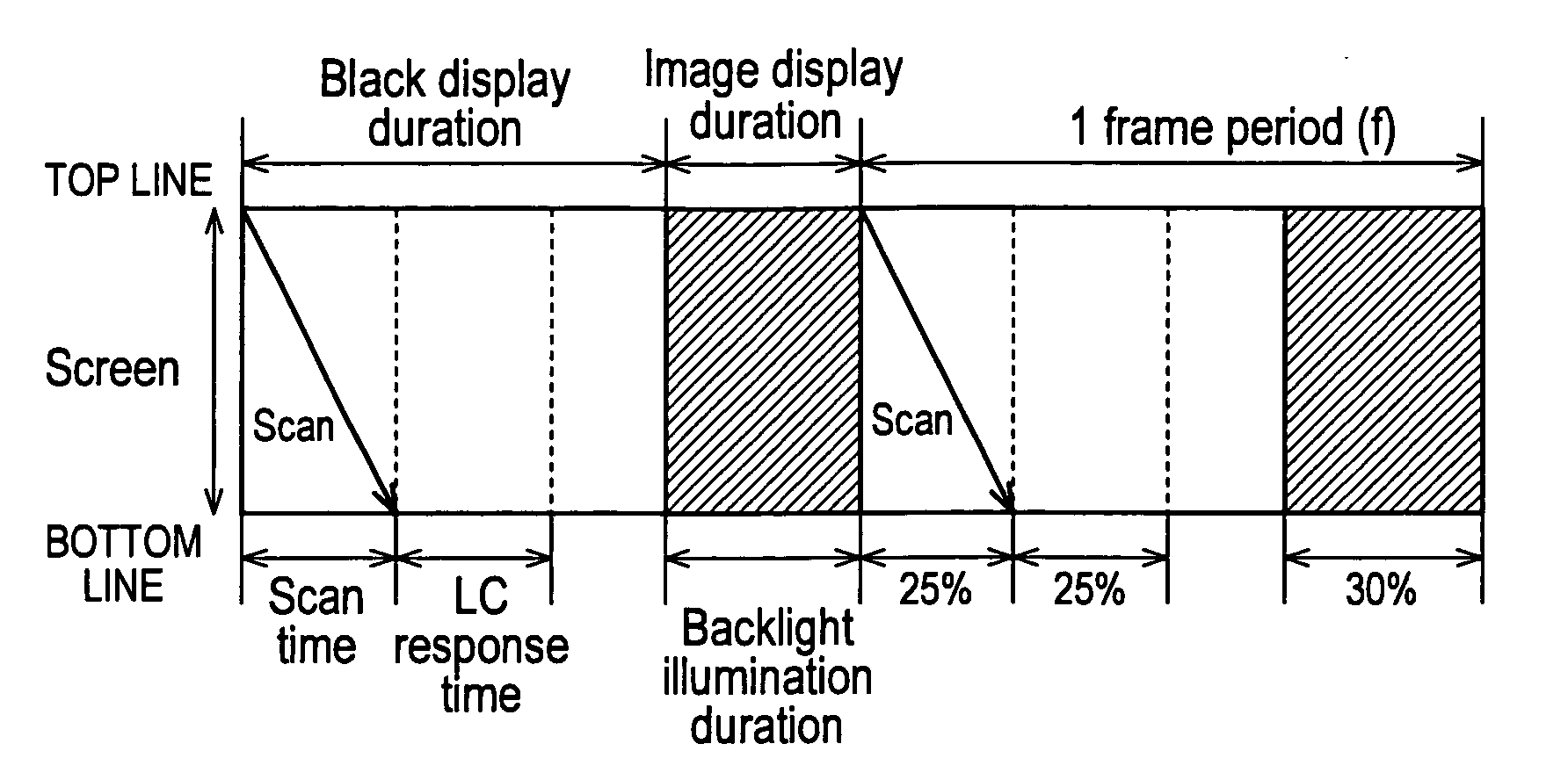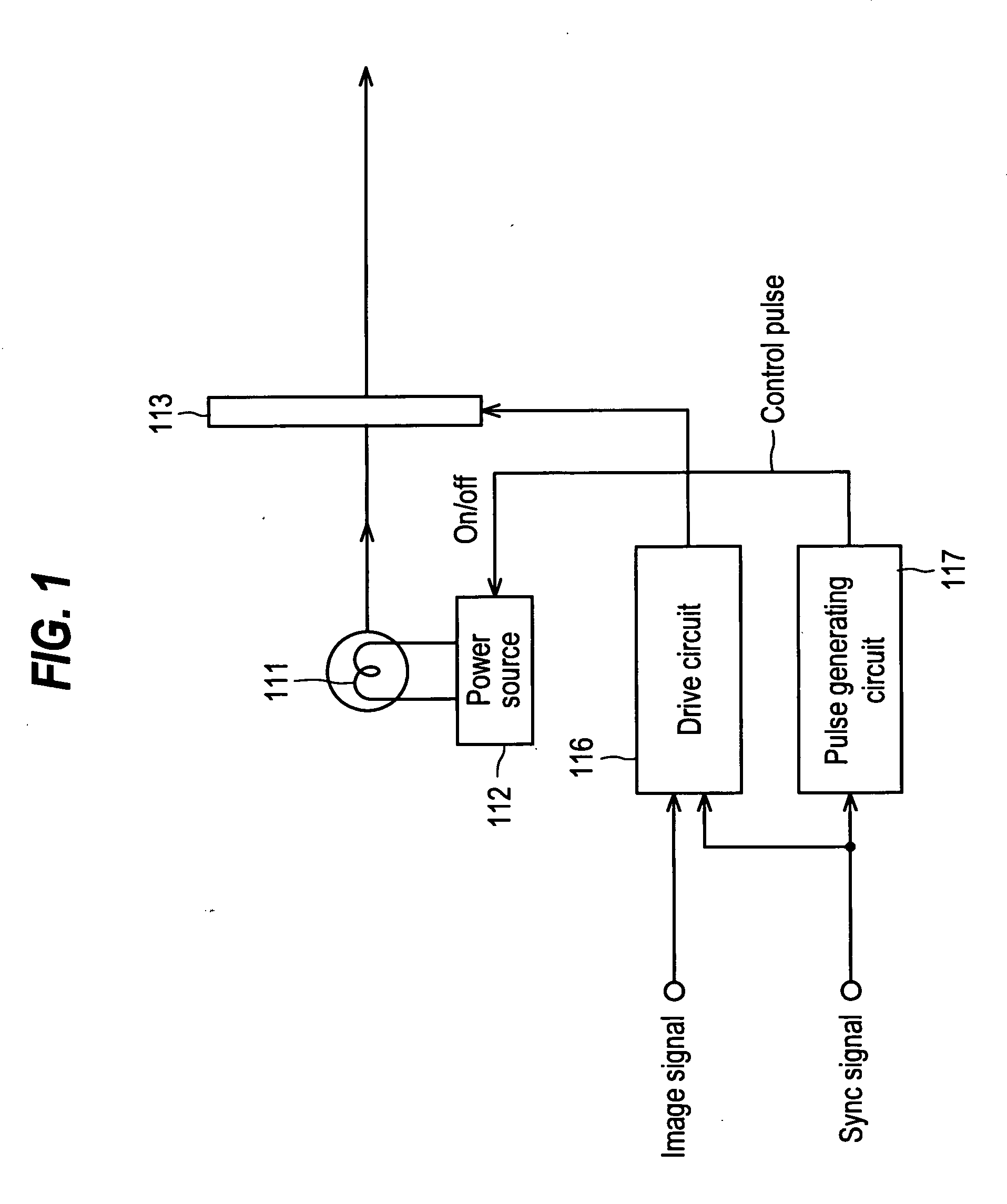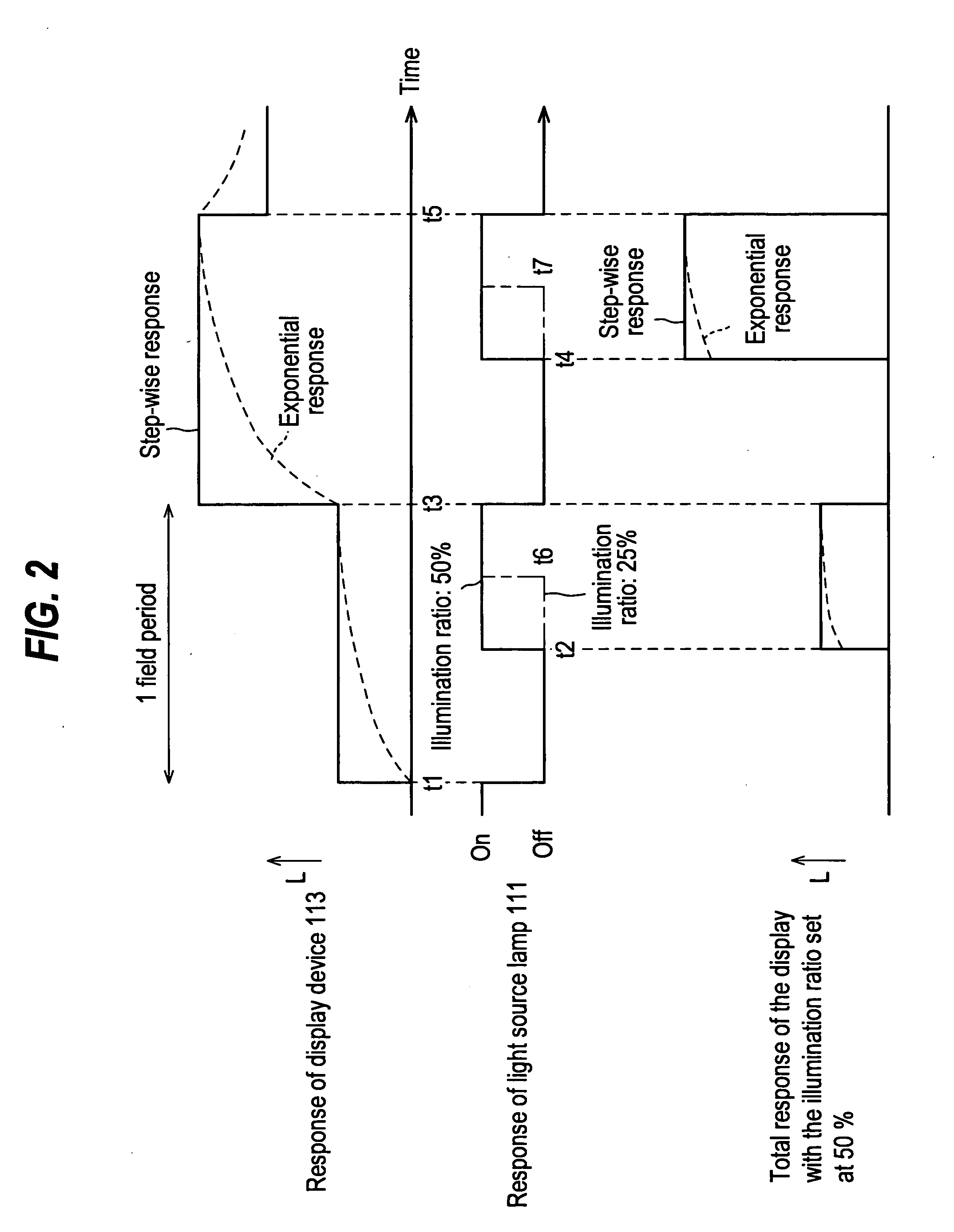Liquid crystal display device
a liquid crystal display and display device technology, applied in the field of liquid crystal display, can solve the problems of the edges of moving parts are perceived as hazy by the observer, and blur injury in motion picture display, so as to prevent blur injury, prevent total image quality improvement, and prevent blur injury
- Summary
- Abstract
- Description
- Claims
- Application Information
AI Technical Summary
Benefits of technology
Problems solved by technology
Method used
Image
Examples
first embodiment
The First Embodiment
[0116] The first embodiment of the present invention will be hereinbelow described in detail with reference to FIGS. 8 to 10. Herein, FIG. 8 is a functional block diagram showing a fundamental schematic configuration of a liquid crystal display of the present embodiment. FIG. 9 is an illustrative view for explaining one example of a basic operating mechanism in the liquid crystal display of the present embodiment. FIG. 10 is an illustrative view for explaining another example of a basic operating mechanism in the liquid crystal display of the present embodiment.
[0117] The liquid crystal display of the present embodiment includes: as shown in FIG. 8, a demultiplexer 1 for separating images, sound data and control data (contents information, etc.,) from input multiplexed data (transport stream) made up of compression coded images in an MPEG (Moving Picture Expert Group) scheme or the like, sound data and control data and outputting these pieces of data to an image...
second embodiment
The Second Embodiment
[0151] Next, the second embodiment of the present invention will be described with reference to FIGS. 11 and 12. The same components as in the first embodiment will be allotted with the same reference numerals and their description is omitted. Here, FIG. 11 is an illustrative view for explaining one example of a basic operating mechanism in the liquid crystal display of the present embodiment, and FIG. 12 is an illustrative view for explaining another example of a basic operating mechanism in the liquid crystal display of the present embodiment.
[0152] The liquid crystal display of the present embodiment is to prevent blur injury arising when displaying motion pictures, with scanning type backlight illumination, and the basic functional block diagram is much the same as the first embodiment described above with reference to FIG. 1. The difference is that a multiple number of bottom-emitting fluorescent lamps disposed parallel to the scan lines, or a multiple num...
third embodiment
The Third Embodiment
[0181] Next, the third embodiment of the present invention will be described with reference to FIGS. 13 to 15. The same components as in the second embodiment will be allotted with the same reference numerals and their description is omitted. Here, FIG. 13 is a functional block diagram showing a fundamental schematic configuration of a liquid crystal display of the present embodiment; FIG. 14 is a timing chart for explaining an electrode drive operation in a liquid crystal display of the present embodiment; and FIG. 15 is an illustrative view for explaining one example of a basic operating mechanism in a liquid crystal display of the present embodiment.
[0182] The liquid crystal display of this embodiment is to prevent blur injuries arising when displaying motion pictures by the black insertion scheme, or by writing the image display signal scan-wise and subsequently writing the black display signal scan-wise (resetting scan) into liquid crystal display panel 16 ...
PUM
 Login to View More
Login to View More Abstract
Description
Claims
Application Information
 Login to View More
Login to View More - R&D
- Intellectual Property
- Life Sciences
- Materials
- Tech Scout
- Unparalleled Data Quality
- Higher Quality Content
- 60% Fewer Hallucinations
Browse by: Latest US Patents, China's latest patents, Technical Efficacy Thesaurus, Application Domain, Technology Topic, Popular Technical Reports.
© 2025 PatSnap. All rights reserved.Legal|Privacy policy|Modern Slavery Act Transparency Statement|Sitemap|About US| Contact US: help@patsnap.com



